Army of Byzantium VI. Palace parts
Christ the Warrior Archbishop's Chapel. End V - the beginning of VI centuries. Ravenna. Italy. Photo author
At the same time, it should be recognized that the armament and equipment of the guardsmen of this period most often can only be talked about hypothetically. Of course, on the one hand, we have a clear iconography on this subject, for example, the mosaic of the Basilica of Saint Vitale. We have an image of earlier or later periods: the palace guard from the Hippodrome of Constantinople, the silver plate from Madrid and the Hermitage, the Apollinare in Klass basilica, all the same Ravenna. They all look identical to what we have in the sixth century. On the other hand, there is a lot of controversy on what particular part of the palace guards is depicted, for example, on a mosaic in Ravenna, what parts stand around Justinian's basilica? We will try to answer these questions. The work presented is such an experience.
With this article I open a small cycle dedicated, first to the guard, and then to other units of the Roman army in the 6th century. Many questions, such as armor or swords, will be discussed in separate articles on riders and infantry of the army in the field.
And yet, I apologize in advance for the detailed elaboration and many terms used, unfortunately, without them the picture will not be complete and superficial.
Guards in armament V c. Mosaic of Santa Major in Rome Italy. Photo author
So, in the 6th century, there were many different divisions among the guards or palace units. These detachments arose out of necessity, they were created by different emperors in order to protect themselves from the possible vicissitudes of political life. At first, there were praetorians (cohors praetoria), units that originated in the republican period of Rome. The Guard, which later even usurped political power, but acting on the side of the opponents of Constantine the Great, they were disbanded by him, in exchange a new Palatine Guard (auxilium palatinum) was created, consisting of palace guard or schol. The shola (sholae) or “school” consisted of seven riders of 500 men. And one more detachment was next to the schols, but, he was speaking in modern terms from “officers” - these were candidates. These two units were not subordinate to the military command, but to the master of office, originally the commander of the cavalry, later he became an analogue of the "prime minister" who was in charge of the whole palace and its guards. We know that after the division of the empire in Rome, their schols remained, guarding the imperial palace, they served there even when the Goths occupied the former capital.
Blow-ups, or eskubitory (excubitor), - equestrian detachment of guards, whose creation is also attributed to Constantine. But, unlike Schol, he immediately took part in the hostilities and lodged in the suburbs of the city of Constantine. Initially, as you can imagine, this part constantly accompanied the emperor in the war, in contrast to the schol guarding him in the capital.
In 361, the army elected Julian Emperor, it was in Paris (Paris). At night, it was rumored that the newly proclaimed emperor could be killed in the palace and the outraged soldiers from the legions dispersed the executors and broke into the imperial palace. [Guard in the background.
Part of the diptych "Our Lady and Christ" Constantinople VI in the Baud Museum. Berlin. Germany. Photo author
Since the 4th century, due to the constant struggle in the empire for power, new guards units and subunits have been created that provide security to the emperors and usurpers. It is worth noting that if in the early period of the struggle for the throne, the all-imperial structures remained untouched, they were a kind of backbone restraining the system, then in the 4th century there are constant changes. For example, on the basis of domestikov and / or protectors, there arises a skola of domestic protectors.
We know that the emperor Magnus Magnus (350-353) in Gaul created two legions, the Magentia, and his brother-co-ruler Magn Decentius (d. 353) - the legion of Decentia. [Amm. Marc. XVIII.9.3.] Constantius II (317-361) was favored by the new legions of the Lanzearies and Mattiarias by the guards. [Amm. Marc. XIX.13.16.]. Honorius (384-423) created the legions of his name. Moreover, in the army, according to the list of "All honorary positions" V c. there were guards legions. In the 5 Army of the Army, there are equestrian "Guards" -Palatinian (vexillationes palatinae) and 6 infantry, in the Thracian Army - 3 of the Palatine cavalry regiment.
What picture do we see in the guard in the 6th century? During the ceremonies of this time, in the alignment of the Guards units and their uniforms, strict discipline and a clear hierarchy were observed. From a later period, we have a remarkable monument, written by the basilus Constantine Porphyrogenitus (905-959) "On Ceremonies", in the 6th c. This ceremony, unfortunately, is not as detailed as described by the poet Koripp. He pointed out that the subordinates of the master of offices were arranged in the following order: the first were excreters, followed by Palatine schols, then civil schols, and behind them were the candidates, then there were protectors.
It should be said that with the seeming static nature of the Byzantine society between the two authors, not only four centuries, but also a lot of changes in management, although many institutions and divisions have survived.
The powerful exhibitors, who guard the divine palace, are massed along the portico of the palace, covering them like walls, golden shields (scuta) and golden spears (aurea pilis). Belted from the side with swords (sword - ense [ensis - unit. H.]), Legs in cotterns ... Palatine (palace) schols are all placed in their places. Now, in the exact order [behind them], the “judges”, cursors, agents, candidates from the stands, protector detachments (protectorum numerus), managed by their masters, all of them are equally tall, shining with armor.
Guard Byzantium VI. Fig. Angus McBride Ed. Osprey
In addition to the listed units, main divisions, historical sources tell us about other, less well-known units located in the palace and performing both security and various important military and diplomatic missions. There were several armed units in the palace, such as swordsmen, scribons, seleniarii, and cubicularia.
Silenciar, from the word „silence“, originally responsible for the silence and order in the imperial palace. At their head stood primikriy. The most famous primikiry is Pavel Silenzariy, a poet who served under Justinian the Great. The Silencians took part in the ceremonies holding gold staffs in their hands.
In the event of hostilities, they could be a command reserve for command and control of troops. Silenzariy Foma was sent to the East, where he led the construction of fortifications in Arob (Beth Arabaye) in 528, an Armenian Adolius, son of Akaki, who commanded thousands of Armenian horsemen in 543. And the future emperor Anastasius (425-491) was the silentiary of the basil of Zeno (430-518).
Scribonarians. At the end of VI. on theaters we meet scribons, they appeared as if from nowhere. In the literature, they are usually referred to as "commissioners". John Lead, a VI official and writer, informs us that scribing or screening of the term "having an origin is well understood." The fact is that this unit arose as a civilian and was dated 29 of October 314 of the year, employees were recruited both among civil and military officials. They were civilian officials subordinate to logofet. The value of this division is constantly growing, which is responsible not only for fisc, but also for the state bank (finance), and later for the organization of monuments in the capital. During the reign of Zeno, in the 5th century, they were of exceptional importance, as described by John the Lead. [J. Lyd., III.36.1.] So how did they become "military"? Gradually, the functions of civil administration pass to the offices, the screen became synonymous with the offices. They were engaged in the same functions under Justinian the Great. But later authors, reporting on the events of the late VI. already wrote about Scribon, as warriors and senior officers involved in hostilities. In 578, the Master of the Army of the East and the Excurders Comit Mauritius recruited warriors among the cataloged soldiers or militias, from the guardsmen of the executors and scribons.
Coin with ears. Emperor Mauritius 583 GIM. Moscow. Russia. Photo author
In 580, they, together with the scholars, guard the three hundred captured Avar ambassadors. Simocatta at the end of the VI century., Already clearly, with what twice, reports that these are imperial bodyguards. Scribon, trying to fulfill the instructions of Stratigus Peter in 594 and capture the bishop of Asim. [Theoph. Sim., VII. III. 8.]. In 602g. the scribon Vonos or Bonos, under the leadership of the same Peter, is in charge of preparing ships for an expedition against the Slavs [Theoph. Sim., VIII. III. 8.], but Feofan the Byzantine reports that he was sent personally by Vasileus and he commanded fleet. It can be assumed that the sudden increase in their importance is associated with the personality of the Vasileus of Mauritius. When the latter, while still committing excitators, carried out the recruitment of warriors for the expedition, and possibly in his “squad”, he found support among the scribes. After which, becoming emperor, he drew them to his guard and for especially important missions. This “managerial decision” was completely in the spirit of the time when the emperor tried to rely on palace guards, different from those that were in favor with the previous ruler. With the death of Mauritius in 602, its “favorites” - scribons - also disappear.
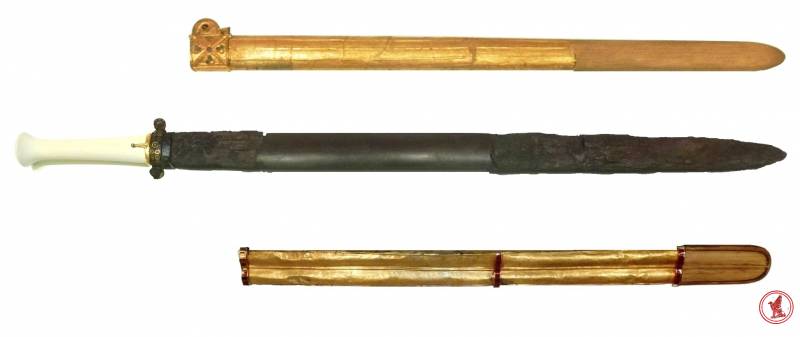
Sheath and sword VI – VII centuries. Taman., Scabbards V – VI centuries. Kerch Archaeological Museum. Koln. Germany. Photo author
Swordsmen or swordtails. Another unit that we encounter on the pages of the chronicles and which did not belong to the regular units of the palace guard was a detachment of swordsmen or swordsmen.
Different authors of this period call them differently: Spatarium or Spafarius, Mahairophores or Xyphosphores: from the spat (sword) of the Mahaira (originally weapon with single-edged, slightly curved blade) and xyphos (ξιφος, straight short sword).
Initially, in the 5th century, this detachment consisted of eunuch swordsmen. The bodyguards of the eunuchs were used by emperors to avoid coups, since from this environment there could be no usurpers and claimants to the throne. In contrast to the Spafarians, Silencians should have been bearded, that is, not eunuchs. However, among them could be not only eunuchs. If the commander Narses belonged to them, then the swordtail and commander of the emperor Tiberius Valentin was not.
During the "party" uprising "Niki" in 532g. in Constantinople, the power of Justinian the Great hung in the balance. At the Hippodrome, a new emperor, Ipaty, was elected, and he was surrounded by three hundred heavily armed youths from the Green Flavian Party. the young commander Belisarius with his personal shield bearers and spearmen. Vasileus took refuge in the Grand Palace, on his side were not all the court units, except Belisarius and Munda, he was guarded by protectors and precisely the Sword bearers. The Easter Chronicle informs parts of scholaria and ex-whites to take a waiting position [Cron. Pashc. P.625.]. The emperor had only 3 thousands of faithful fighters. and only Vasilisa Theodora made a harsh speech, ending it:
(Procop. BPIHXIV. 36-37.)
Belisarius and Mund were ordered to attack the rebels, located on the Hippodrome. The command was entrusted to Belisarius, both groups moved to the main square of the capital, their goal was to hit the crowd, but in case of failure, to be able to retreat to the palace. Mund bypassed the north, and Belisarius had to go through the gate, on the east, by a short road to the Hippodrome. The "Guardsmen" guarding the gates pretended that they had not heard the requests, did not open them and did not let Belisarius from the east side go to the Hippodrome. This forced him to return to the emperor, it seemed that the whole thing was lost, but the troops decided once again to try to get to the rebels and their usurper. Belisarius came out, through the burning city, on the north side, there was already Mund with his sons, who was at a loss and did not understand how to act. In the meantime, the cubiculars and the swordsman (!) Narses did not sit idle, he was able to attract to his side a part from the “Blue” party, and they began shouting “Victory to Justinian!” - “Nika!”. Belisarius immediately began beating the townspeople, Mund supported him, and the swordsmen captured the usurper and his supporters. It is to them, basil, who will entrust their guard. The next time the swordsmen once again fulfilled the “police” functions, together with excreters, they dispersed Dima, and again at the Hippodrome, in 545.
Clothing. Sources do not give us the opportunity to clearly highlight the clothes of various regiments, despite the fact that we know that it differed in color and stripes. Moreover, in the ceremonial atmosphere, the Guardsmen had different types of weapons and equipment.
The warriors were wearing chiton and chlamyd. Chlamyda or lazerna - cloak or mantle, in the form of a piece of oblong tissue, often to the toes, fastened with a clasp on the right, so that the chest and left side of the body were completely covered with a cloak, only the right arm and forearm were open. Chlamyda was shorter himatia. Cloaks and tunics were trimmed with embroidery, or rather, to say that the embroidery was carried out on a separate piece of fabric, and then sewn on the sleeves and hem. Each such insert was distinguished by original technical solutions, even if the plot of the drawing on it was repeated.
[Center]
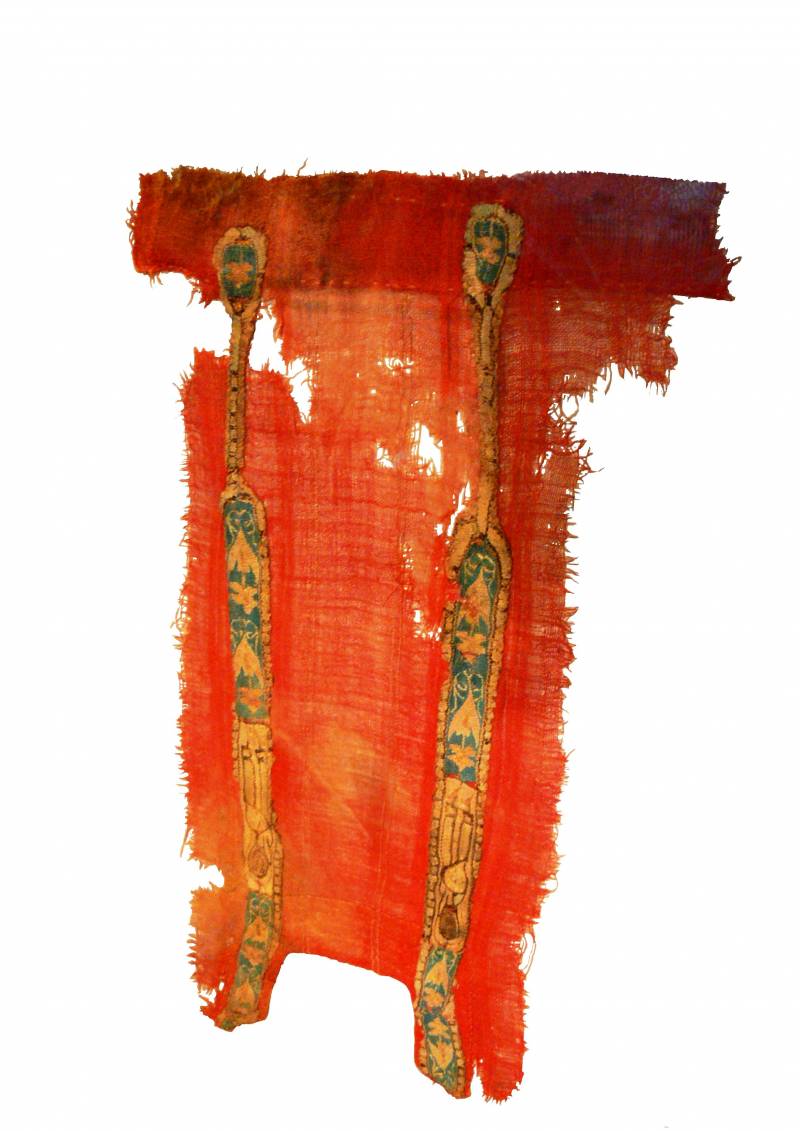
Tunic. III – VIII centuries. Inv.90.905.53 Metropolitan Museum. New York. USA
The colors of clothes, even civilian clothes were full of special meaning and symbolism, and what to speak about the shape of the guardsmen, so Procopius from Gaza (462-525) compared bright clothes to life and light to which Christ surrounds God the Father.
Warriors wore tight-fitting pants (bracae), reminiscent of pantyhose and black leather sandals - campagia or campagi, a distinctive guard shoe of the 6th century. This shoe was of Etruscan origin and originated from the word campus (field).
Byzantine shoes. Photo author
1. Footwear. II – VIII centuries. Panopolis (Axim). Egypt. Inv. 26.9.11. Metropolitan Museum. New York. USA.
2. Soldier shoes II – VIII centuries. Inv. Panopolis (Axim). Egypt. 90.5.35. Metropolitan Museum. New York. USA.
3. Campagias. Byzantium. IV-VI centuries. Inv. 837 & A-1903. Victoria and Albert Museum. London. England.
To be continued ...
Sources and literature:
Jean le Lydien Des Magistours de l'etat romain. Paris.T. I – II. 2006.
Corippe Éloge de l'empereur Justin II. Paris 2002.
The Chronicle of Theophanes Confessor. Oxford. 1997.
Chapters from the “Church History” of John of Ephesus / Translation by N.V. Pigulevskaya // Pigulevskaya N.V. Syrian medieval historiography. Research and translations. Compiled by Meshcherskaya E.N. St. Petersburg., 2011.
Procopius of Caesarea. War with the Persians. War with vandals. Secret history / Translation, article, comments A. A. Chekalova. SPb., 1997.
Chronicle of Zechariah Ritor / Translation N.V. Pigulevskaya // Pigulevskaya N.V. Syrian medieval historiography. Research and translations. Compiled by Mescherskaya E.N. C-PB., 2011.
Theophylact Simokatta. Story. Translation by S.P. Kondratiev. M., 1996.
I. Chichurov. Byzantine Historical Works: Theophanes Chronography, Nicephorus Breviary. Texts. Transfer. Comment. M., 1980.
Theophanes Byzantium. The chronicle of the Byzantine Theophanes from Diocletian to the kings Michael and his son Theophylact. Per. with Greek V.I. Obolensky and F.I. Ternovsky; foreword O. M. Bodyansky; Prisk Paniysky.Skazaniya Prisk Paniysky. Ryazan .2005. C. 251.
Dryazgunov K.V. Cubicularii. Spatharii as bodyguards and a division of cubicularii.// Roman glory // http://www.roman-glory.com/dryazgunov-cubicularii.
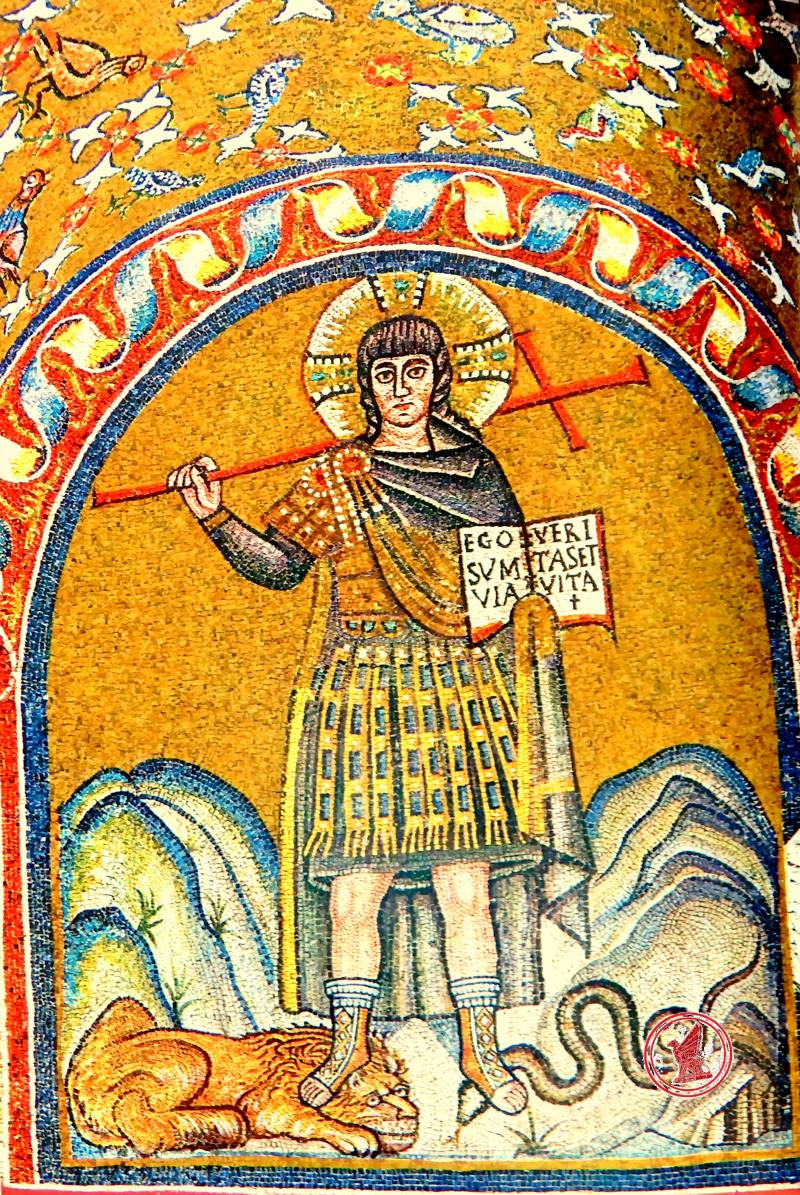
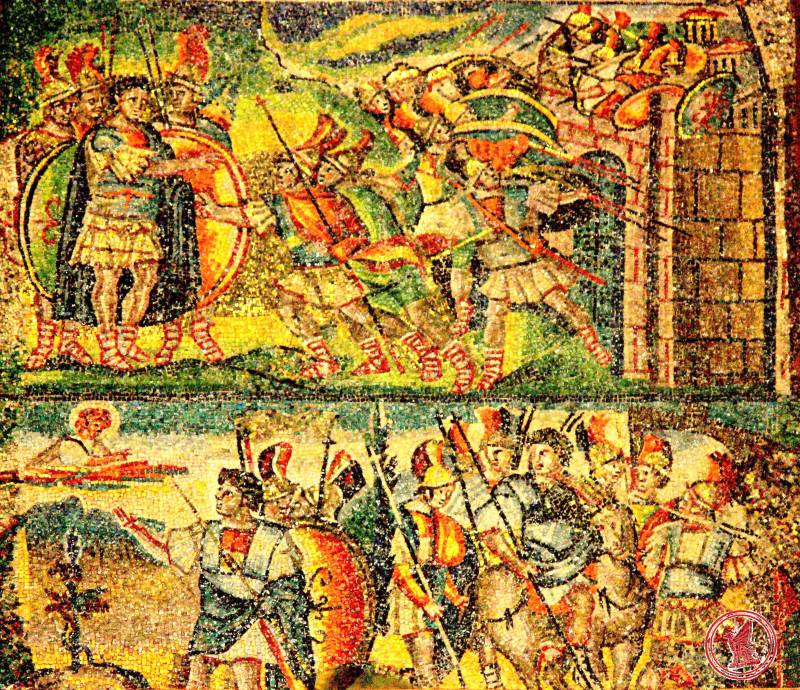
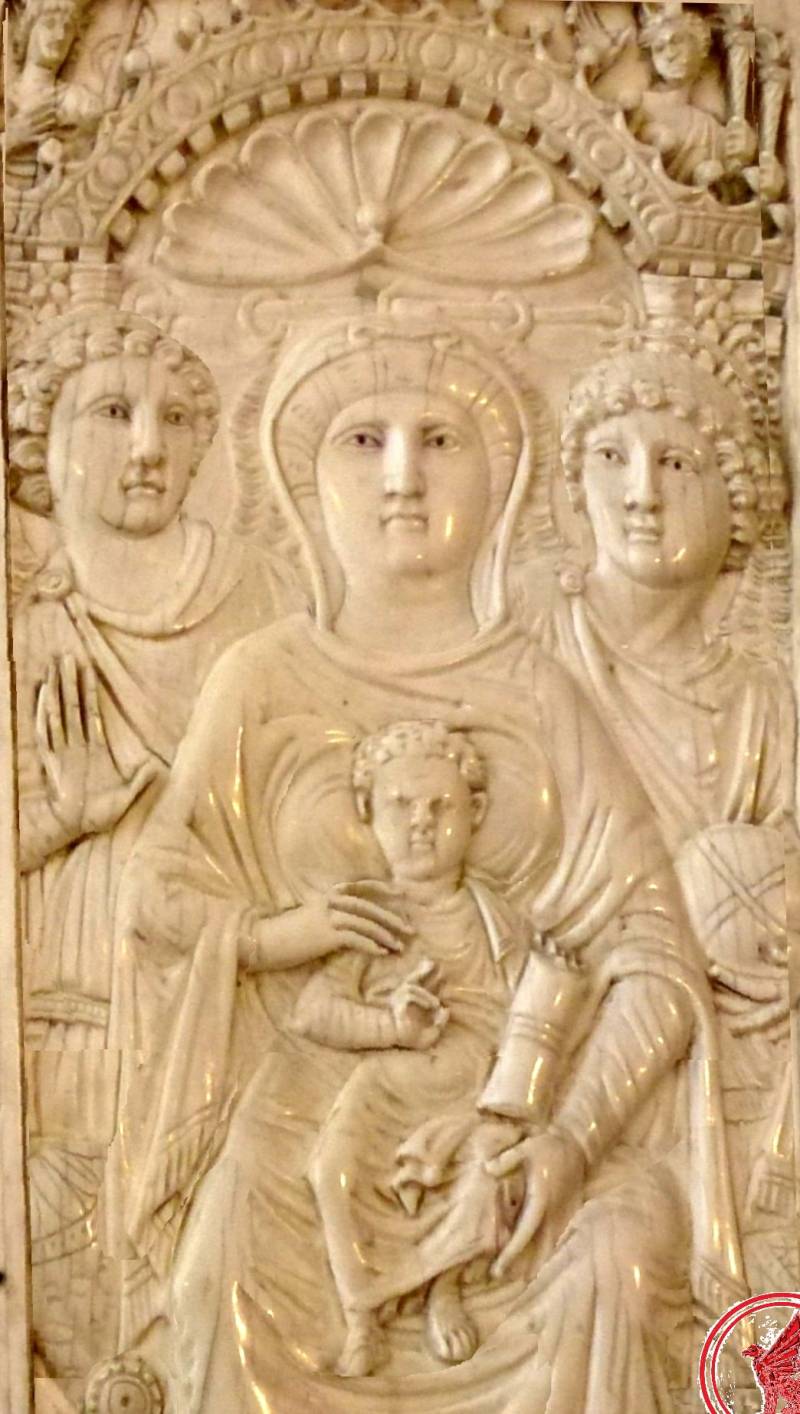
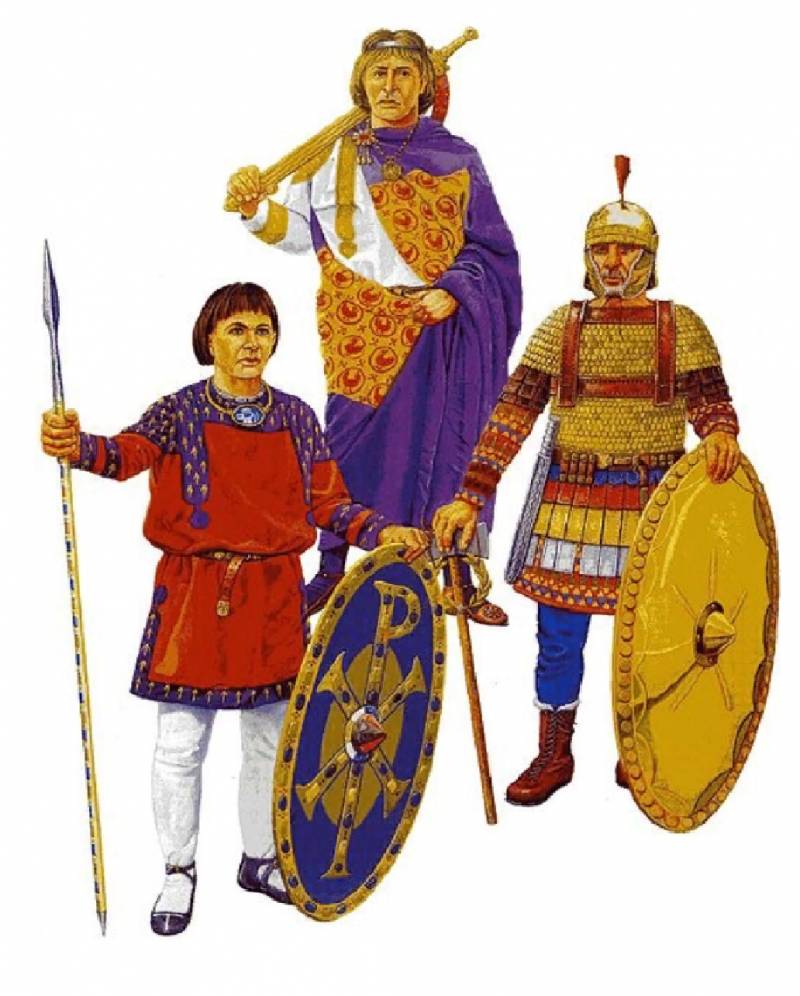
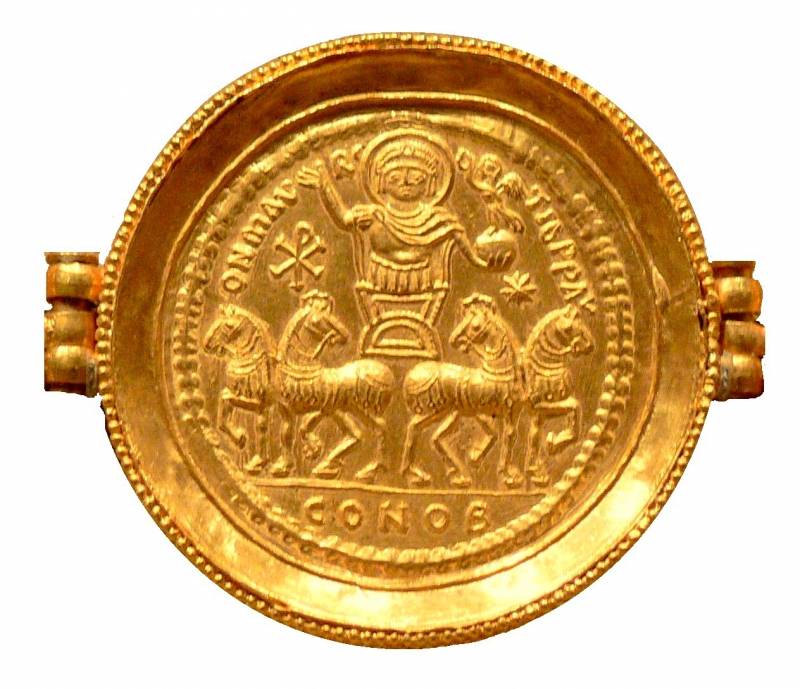
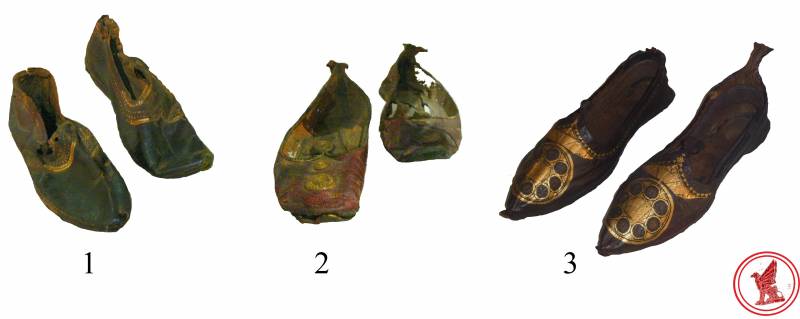
Information